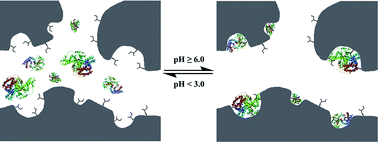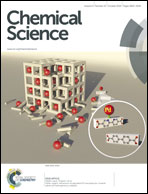Nanoconfining affinity materials for pH-mediated protein capture–release†
Abstract
The nanoconfinement effect may dramatically influence the physicochemical properties of substances. Porous materials have been widely used as separation media in liquid chromatography. However, the confinement effect of pores was usually considered as a detrimental factor. Here, we report novel types of functional materials, nanoconfining affinity materials (NCAMs), which rely on the nanoconfinement effect of porous materials with pore sizes comparable to the molecular sizes of proteins to provide dominant affinity. Two NCAMs, which have a pH-responsive capture–release ability for proteins, were developed. The NCAMs are able to bind proteins with a molecular mass larger than 18 kDa, when the surrounding pH is ≥6.0, and the captured proteins can be reversibly released upon switching the environmental pH <3.0. The dissociation constants for three test proteins ranged from 10−5 to 10−7 M. The NCAMs retained the conformation and activities of the captured proteins. Promising applications of the NCAMs for enantiomer resolution, immobilized enzyme reactors and the depletion of serum proteins were demonstrated. The nanoconfining strategy opens up new avenues for the rational design of unique functional materials.


 Please wait while we load your content...
Please wait while we load your content...